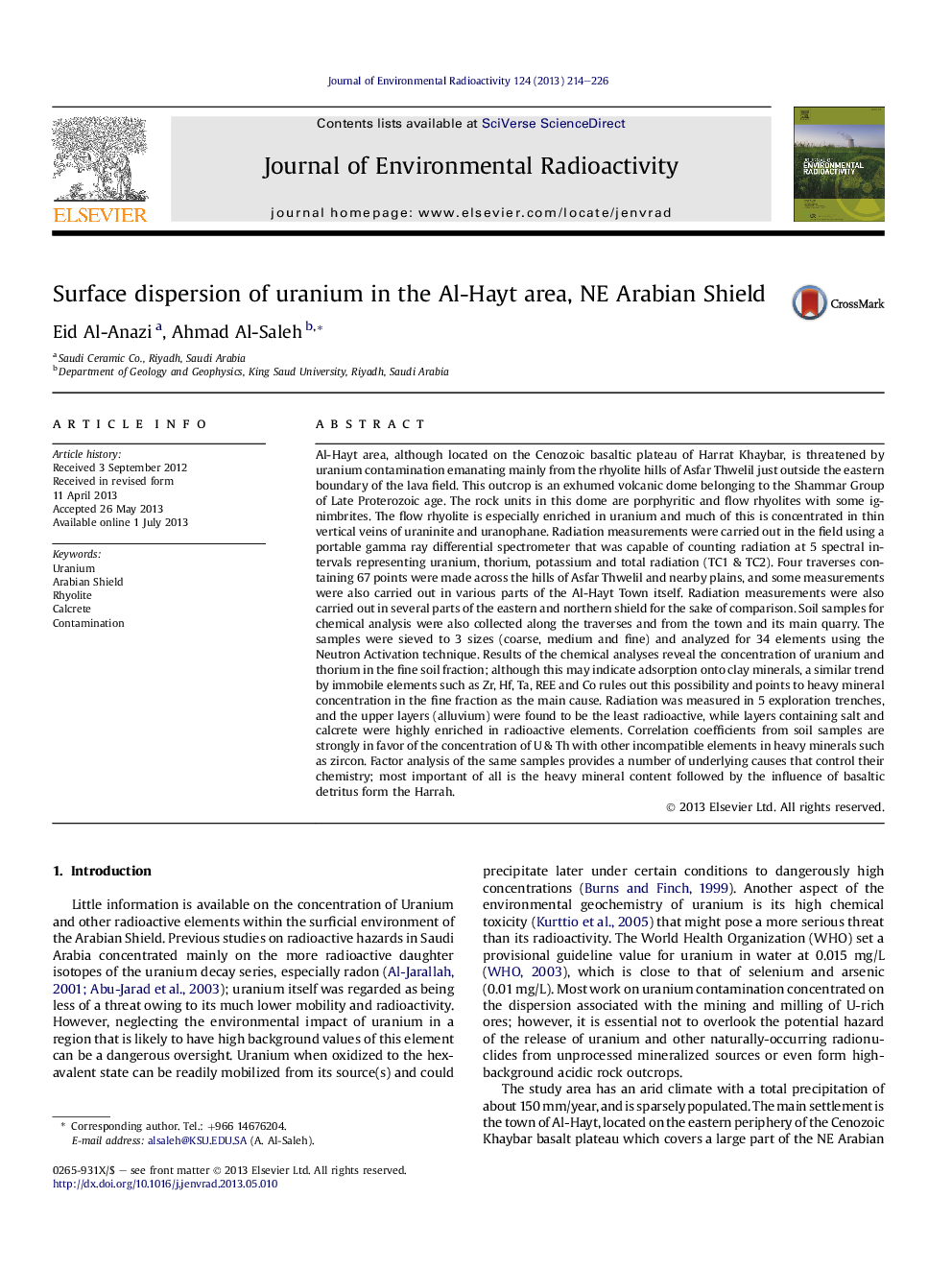| کد مقاله | کد نشریه | سال انتشار | مقاله انگلیسی | نسخه تمام متن |
|---|---|---|---|---|
| 1738192 | 1521609 | 2013 | 13 صفحه PDF | دانلود رایگان |

• Acidic volcanics near Al-Hayt are enriched in uranium and thorium.
• Much of the uranium removed from rhyolite outcrops is concentrated in subsurface calcrete.
• The upper regolith layer contain U and Th mostly as trace elements in heavy minerals.
Al-Hayt area, although located on the Cenozoic basaltic plateau of Harrat Khaybar, is threatened by uranium contamination emanating mainly from the rhyolite hills of Asfar Thwelil just outside the eastern boundary of the lava field. This outcrop is an exhumed volcanic dome belonging to the Shammar Group of Late Proterozoic age. The rock units in this dome are porphyritic and flow rhyolites with some ignimbrites. The flow rhyolite is especially enriched in uranium and much of this is concentrated in thin vertical veins of uraninite and uranophane. Radiation measurements were carried out in the field using a portable gamma ray differential spectrometer that was capable of counting radiation at 5 spectral intervals representing uranium, thorium, potassium and total radiation (TC1 & TC2). Four traverses containing 67 points were made across the hills of Asfar Thwelil and nearby plains, and some measurements were also carried out in various parts of the Al-Hayt Town itself. Radiation measurements were also carried out in several parts of the eastern and northern shield for the sake of comparison. Soil samples for chemical analysis were also collected along the traverses and from the town and its main quarry. The samples were sieved to 3 sizes (coarse, medium and fine) and analyzed for 34 elements using the Neutron Activation technique. Results of the chemical analyses reveal the concentration of uranium and thorium in the fine soil fraction; although this may indicate adsorption onto clay minerals, a similar trend by immobile elements such as Zr, Hf, Ta, REE and Co rules out this possibility and points to heavy mineral concentration in the fine fraction as the main cause. Radiation was measured in 5 exploration trenches, and the upper layers (alluvium) were found to be the least radioactive, while layers containing salt and calcrete were highly enriched in radioactive elements. Correlation coefficients from soil samples are strongly in favor of the concentration of U & Th with other incompatible elements in heavy minerals such as zircon. Factor analysis of the same samples provides a number of underlying causes that control their chemistry; most important of all is the heavy mineral content followed by the influence of basaltic detritus form the Harrah.
Journal: Journal of Environmental Radioactivity - Volume 124, October 2013, Pages 214–226